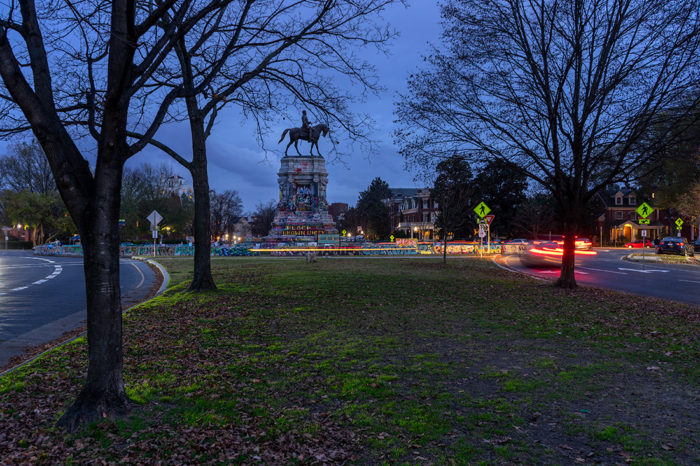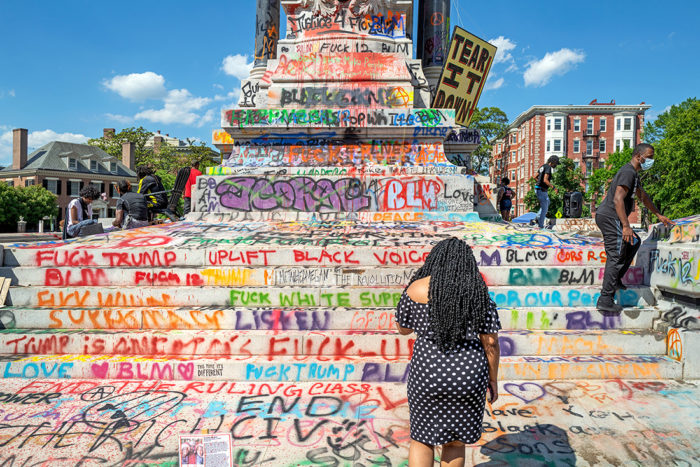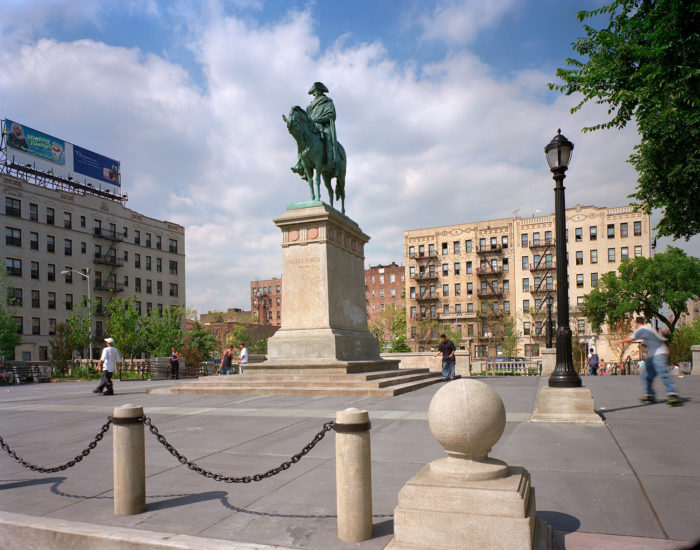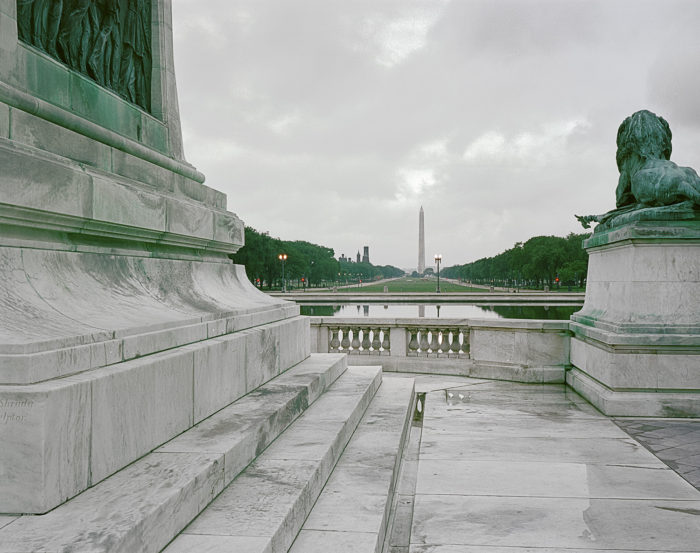
Robert E. Lee, Monument Avenue, Richmond – © Brian Rose
As the city of Richmond dismantles the pedestal that once supported Robert E. Lee high above Monument Avenue, the grand boulevard of the Lost Cause, the news comes that Charlottesville has made a decision about their Lee statue, presently in storage.
According to the Washington Post, “…the Charlottesville City Council voted 4-0 to hand it over to the only local bidder: the Jefferson School African American Heritage Center, a Black-led museum that proposed repurposing the metal entirely.”
The museum intends to melt down the statue and create from the bronze some kind of new artistic work. Andrea Douglas, the executive director of the center says, “It really is about taking something that had been harmful and transforming it into something that is representative of the city’s values today.”

Robert E. Lee, Monument Avenue, Richmond– © Brian Rose
It sounds like an extension of what the protesters did when they transformed the meaning of the statues and memorials on Monument Avenue by taking possession of them and covering them with an exuberant, and often profane, kaleidoscope of graffiti. It was a transient moment in time, of course, and leaves unanswered what to do with the vanquished statues, and what to do with the public spaces they once commanded. Charlottesville is seeking a way to accomplish both tasks.
But let us consider, as this proposal goes forward, the artist who created the Robert E. Lee slated for meltdown. Henry Shrady was a largely self-taught sculptor from New York who had risen quickly in a field dominated by such luminaries as Daniel Chester French and Augustus St. Gaudens. His studio was in Westchester County and most of his statues, including Robert E. Lee, were cast at the Roman Bronze Works in Brooklyn.

George Washington at Valley Forge, Williamsburg, Brooklyn – © Brian Rose
Shrady’s father was a celebrated physician who had served as a consulting surgeon to Ulysses S. Grant in his last days. The Shrady statue I know best is his George Washington at Valley Forge, which stands at the approach to the Williamsburg Bridge on the Brooklyn side of the East River. It is a moody depiction of a steadfast Washington cloaked against the winter cold. His most important work is the Grant memorial in front of the Capitol in Washington, D.C. Grant sits astride his horse facing the Lincoln Memorial surrounded by lions and flanked by highly energetic battle tableaux, one of an artillery team, the other of a cavalry charge. Many smaller works by Shrady are in the collections of major museums including the National Gallery of Art in Washington.
Sculptors like Shrady rose to prominence in conjunction with the City Beautiful movement, inspired by the European Beaux-Arts, which was prominently on display in the architecture for the World’s Columbian Exposition in Chicago. The movement inspired the design of major urban projects like Benjamin Franklin Parkway in Philadelphia, Grand Army Plaza in New York, and Monument Avenue in Richmond.
Despite Robert E. Lee’s betrayal of Lincoln and the country he was sworn to defend, Lee’s nobility of character was widely assumed, even by many in the North. Shrady took the commission in Charlottesville telling his sponsor, Paul Macintyre, “I am going to make this the best thing I ever did, as I am a great admirer of Gen. Lee.” Of course, the commission came with a $30,000 fee, which is approximately $650,000 in today’s money.

Ulysses S. Grant Memorial, Washington, D.C. – © Brian Rose
For me, the greatest irony is that when the white supremacist mob stormed the Capitol building on January 6, 2021, they had to pass directly by Shrady’s Grant memorial, perhaps the most important symbol of the triumph of the Union over those who sought its destruction in order to preserve the institution of slavery.
Melting down the Charlottesville Robert E. Lee dishonors the artist who created this epic expression of national purpose in Washington, and while the intention is to transform the Lee statue into something constructive, to me it feels more like negation.
Sorry, don’t get how the repurposing of one such deeply offensive work (and we’re talking morally here, not just aesthetically) negates an entire life’s work.
Should we also burn all copies of Birth Of A Nation and Triumph Of The Will? No, they can be shown on select occasions at select venues to be properly scrutinized and analyzed within context. They do not appear triumphant in an honored and elevated area of public view each and every day ad infinitum…
But there’s still good reason why Nazi statuary and imagery have been removed and obliterated in Germany. Repurposing such symbols of repression into something constructive is the very definition of transformation, and as positive a model as one can hope to achieve.
I often wondered if Republicans’ inherent racism, which for decades they’ve conveniently and purposely couched in code for public consumption, were more openly and freely expressed would actually be a good thing- so that we could actively confront and deal with it in the open air of sunlight. Trump proved me wrong. It is not properly dealt with- it is merely relegated to the domain of normality and everyday acceptance, just as those Civil War statues were considered “normal.”
Stan,
I’m not going to lose any sleep over this particular statue being melted down, though the idea of destruction of such things does not sit well with me. The obliteration of Nazi or Communist statuary and objects does not sit well with me either. I believe that removal of these symbols of evil from view has lessened public consciousness of that evil. One of the things I do as a photographer is to preserve, at least in ephemeral form, those symbols on the landscape.
i see that Kara Walker is doing a project for MOCA that I believe will utilize some of these now removed statues. Her immersive piece in the Domino Sugar plant here in Williamsburg was powerful, though criticized by some because of its appropriation of certain cliches and symbols. My book, Monument Avenue, places the J.E.B. Stuart statue next to Kehinde Wiley’s reinterpretation of that statue. The Stuart is now gone. Only the photos remain.
We have to keep these things in the forefront, not make them disappear.
BTW, I ordered a copy of your zine. Keep up the good work, and let’s keep on talking.